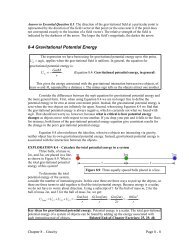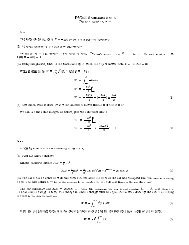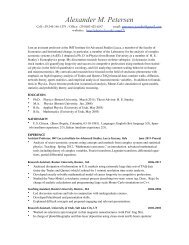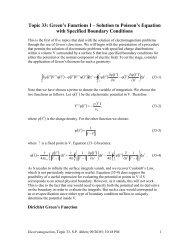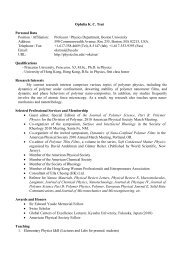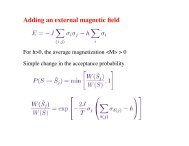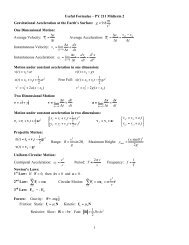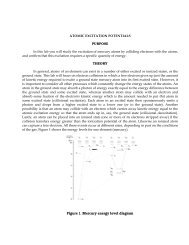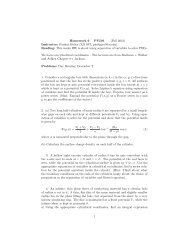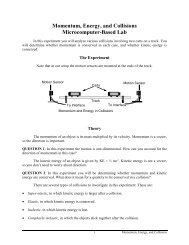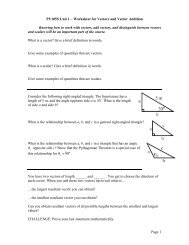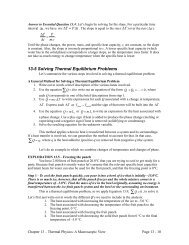Worksheets
Worksheets
Worksheets
Create successful ePaper yourself
Turn your PDF publications into a flip-book with our unique Google optimized e-Paper software.
Ideal-Gas Worksheet2. Suppose we again have two samples, A and B, of an ideal gas placed in a partitioned insulated container. Thegas in Sample A is the same gas that is in Sample B; however, Sample A now has twice the mass of sampleB (and the volume of sample A is twice the volume of sample B). Energy but no material can pass throughthe conducting partition; the partition is rigid and cannot move.ABa. Consider the two unequal masses of ideal gas, A and B:i. If A and B have the same thermal energy, will their temperature be the same, or different? (Is theaverage kinetic energy per molecule the same, or different?)ii.After the initial time, would you expect to see any changes in the temperatures of samples A andB? If yes, describe the changes (i.e., increases or decreases). If you don’t expect to observe anychanges, explain why.On the bar chart on the next page, the values of the samples' thermal energy are shown at some initialtime (“Time Zero”); "Long After" refers to a time long after that initial time. In this case, A and B do NOThave the same initial thermal energy. Refer to the set of three bar charts to answer the following questions.b. Find the absolute temperature of sample A at time zero (the initial time), and plot it on the chart.c. A long time after time zero, what ratio do you expect for the temperatures of the two samples?TA! _____?TBd. A long time after time zero, what ratio do you expect for the thermal energies of the two samples?EthA! _____? Explain.Eth B3
Ideal-Gas Worksheete. Complete the bar charts by finding the “Long After” values for temperature and thermal energy, andalso the amounts of energy transferred to each sample. (This is the net transfer that occurs betweentime zero and the time “long after.”) If any quantity is zero, label that quantity as zero on the barchart. Explain your reasoning below. NOTE: The missing values – indicated by a thick line on thehorizontal axis – are not necessarily zero – you need to determine whether or not they are actuallyzero!Thermal energyAbsolute Temperature10 kJ8 kJ6 kJ4 kJ2 kJ?? ? ? ?0ABAB0ABABTime ZeroLong AfterTime ZeroLong AfterEnergy Transfer to Sample:+ 4 kJ+ 2 kJ0 kJ– 2 kJ– 4 kJ????AB4



![arXiv:1303.7274v2 [physics.soc-ph] 27 Aug 2013 - Boston University ...](https://img.yumpu.com/51679664/1/190x245/arxiv13037274v2-physicssoc-ph-27-aug-2013-boston-university-.jpg?quality=85)
